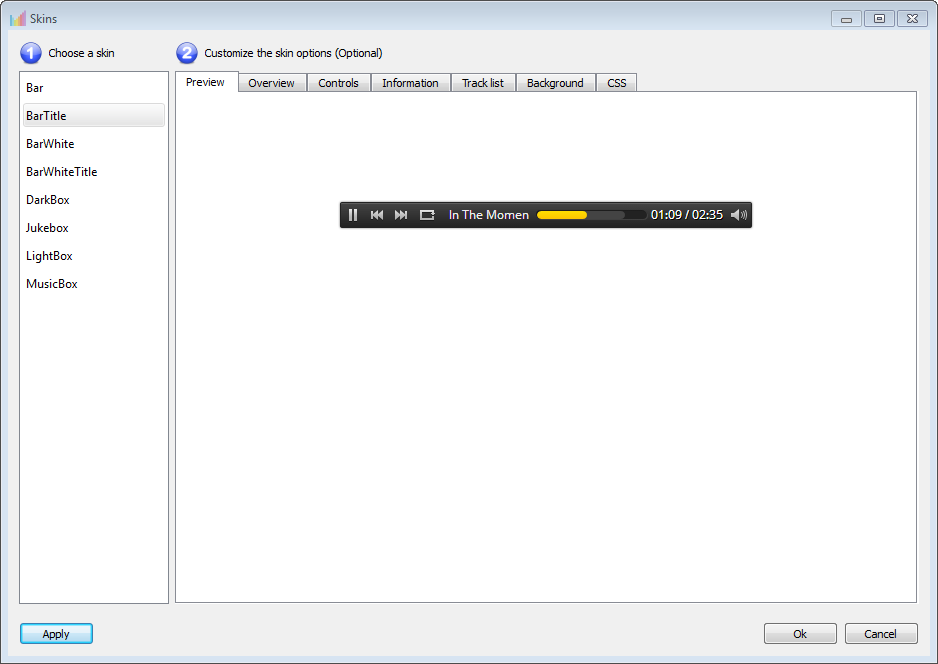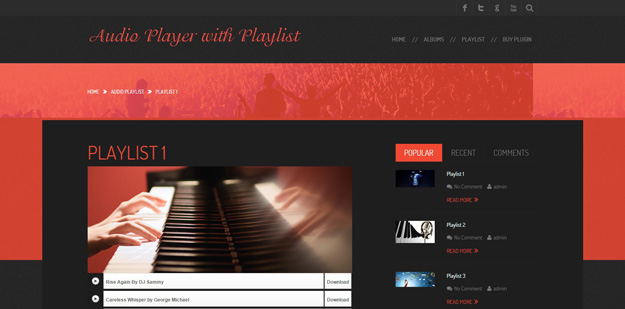
Instead of offering an HTML5 player to modern browsers and a totally separate Flash player to older browsers, MediaElement.js upgrades them with custom Flash and Silverlight plugins that mimic the HTML5 MediaElement API. MediaElement is an audio an video player which is written in pure HTML5 and CSS. Instead of spending time on researching for the ones you needed, Here in this compilation, we pick the some of the best website HTML5 audio player options freely available to use. Via one of the most exciting and long-awaited features in HTML5 the element, enabling native audio playback within the browser which makes it easy to stream your audio online. Previously, the ability to play any type of audio within a browser involved using Adobe Flash or other browser plugins. In the end we are left with a straight-forward and simplified language for creating websites and applications. Rather than shouldering all the responsibility for presentation and functionality, HTML5 gets back to basics, allowing us to tap into APIs and native browser functionality, while looking to CSS to create the visual look and feel. HTML5 is just the markup – a set of standards that define how a document should be structured and how browsers should interpret it. loads the animation that transitions the play icon into the pause icon into the referenced button, using Lottie’s loadAnimation() methodĬonst animation = lottieWeb.The first thing to understand is where HTML5 ends and CSS3 begins. variable that will store the button’s current state (play or pause) variable for the button that will contain both iconsĬonst playIconContainer = document.getElementById('play-icon') The JavaScript is what we need to break down a bit because it’s doing several things: // imports the Lottie library via Skypack The CSS section includes some light styling. a element for the play and pause actions.text that briefly describes the container, and.In the meantime, permit me to describe the following Pen: New to Lottie? I wrote up a thorough overview that covers how it works.
#Html5 audio player generator for free#
The animated icon we’re going to use is provided for free by Icons8. We don’t have to create the animation on After Effects though. What would help us accomplish that is Lottie, a library that renders Adobe After Effects animations natively. Of course, a little animation could take place as the icon transitions from the play to pause. The play button should display when the audio is paused and the pause button should display when the audio is playing. So, the question becomes: how do we swap between the two buttons, both visually and functionally? the pause icon will replace the play icon when the play action is triggered. That way, we’re toggling between the two rather than taking up space by displaying both at the same time. It will contain the play icon, but the pause icon should also be in this button. I think the HTML element appropriate for this button is the element. We have plenty of elements to work with here based on the elements we just listed above. We should first go through the semantic HTML elements of the player before we start building features and styling things. Basic markup, styling and scripts for each element
#Html5 audio player generator how to#
We’re not going for anything too fancy here: just a proof of concept sorta thing that we can use to demonstrate how to make something different than what default HTML provides. Let’s say this is the design we’re aiming for: If our goal is to match the functionality of these examples, then we need to make sure our player has: So, put on your headphones, crank up some music, and let’s get to work! The elements of an audio playerįirst, let’s examine the default HTML audio players that some of the popular browsers provide.


We’re going to take stab at making our own player in this post. The audio player fits in seamlessly with other elements on the page, sporting controls that complement the overall design. Check out the sweet custom player Chris and Dave set up over at the ShopTalk Show website. We even get to specify multiple files for better browser support, as well as a little CSS flexibility to style things up, like giving the audio player a border, some rounded corners, and maybe a little padding and margin.īut even with all that… the rendered audio player itself can look a little, you know, plain.ĭid you know it’s possible to create a custom audio player? Of course we can! While the default player is great in many cases, having a custom player might suit you better, like if you run a podcast and an audio player is the key element on a website for the podcast. Point it to a sound file and that’s all there is to it. HTML has a built-in native audio player interface that we get simply using the element.


 0 kommentar(er)
0 kommentar(er)
